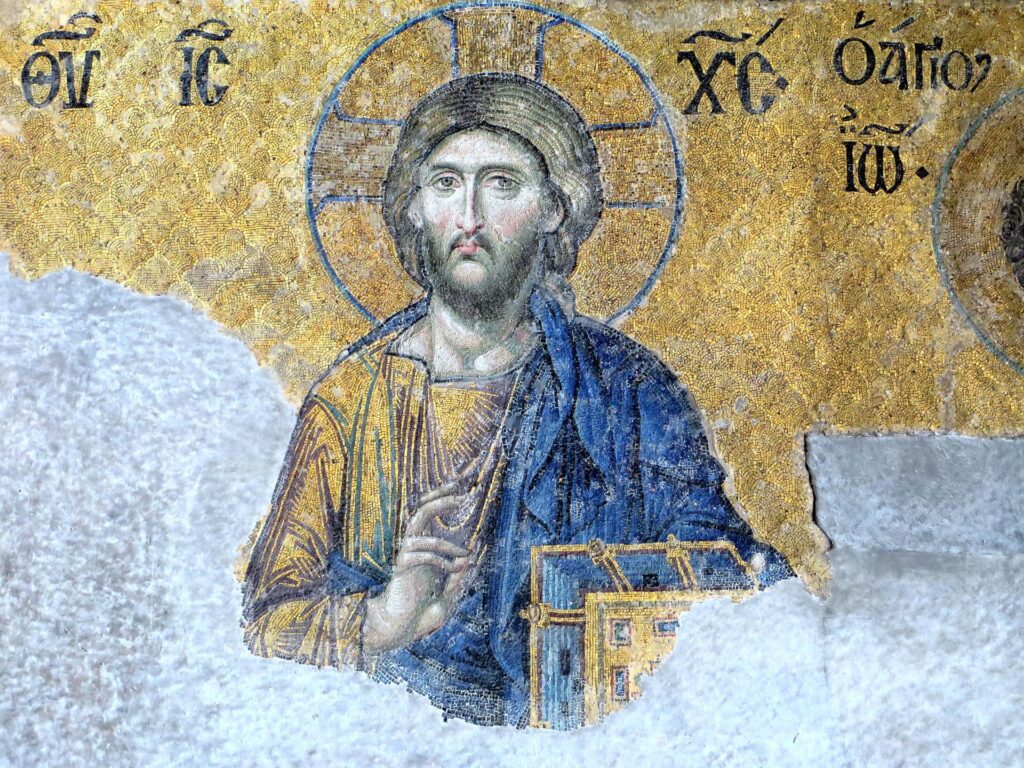“Whoever seeks our eternal country surely lives a blameless and upright life.” + Saint Gregory the Great
1. Cities and Towns
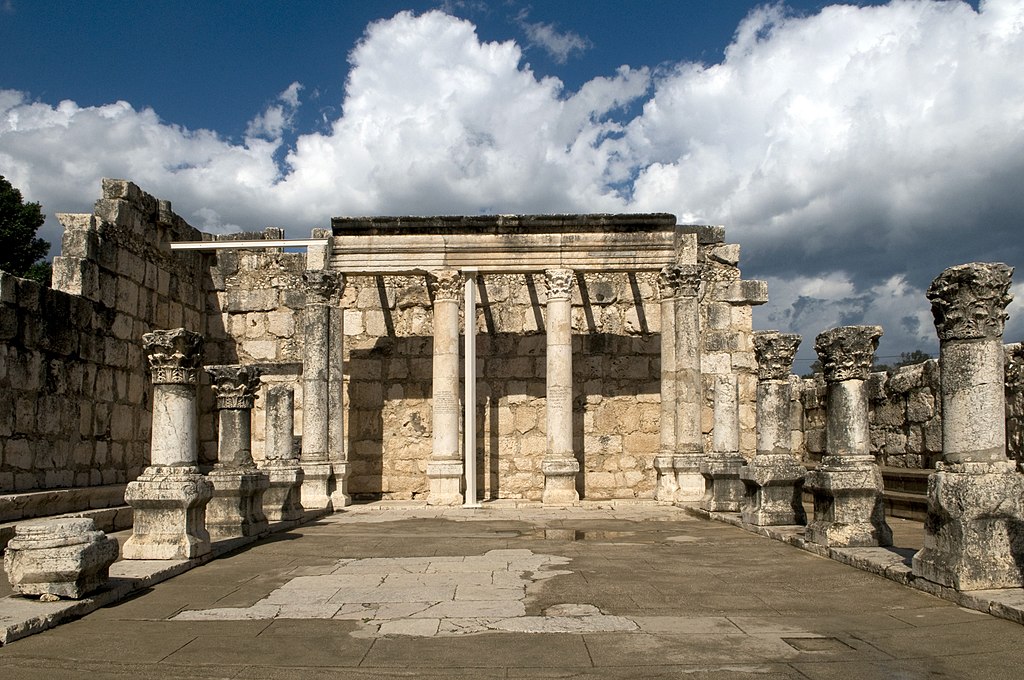
Arimathea
Arimathea is mentioned in all four Gospels. It was the hometown of “Joseph of Arimathea” who was a wealthy member of the Sanhedrin and secretly a disciple of Christ. Joseph requested Christ’s crucified body from Pontius Pilate for burial.
When it was evening, there came a rich man from Arimathea named Joseph, who was himself a disciple of Jesus. Matthew 27:57
Caesarea Philippi
Ceasarea Philippi was predominately a Gentile community. It was located in the far north of Palestine, near the north end of the Jordan River. The inhabitants of Caesarea Philippi were Hellenistic. There was even a shine dedicated to the deity Pan. Herod the Great had built a temple to Caesar Augustus there. Herod’s son, Philip the tetrarch, turned the place into a Hellenistic community. Philip added his name to it to distinguish it from other cities. The location is significant, because it was at Caesarea Philippi Peter confessed to Jesus that he believed Jesus is the Son of the Living God. Jesus accepted Peter’s confession and mentions His “church” for the first time.
When Jesus went into the region of Caesarea Philippi he asked his disciples, “Who do people say that the Son of Man is?” Matthew 16:13
Capernaum
The location of Capernaum was on the north shore of the of Sea of Galilee. Capernaum was the hometown or base of Jesus during His public ministry. The small town was more or less a fishing village for many of the residents who lived there. In Matthew’s Gospel, Jesus healed the Centurion’s servant, preached repentance, and called several of His disciples, including Matthew, who was “sitting at the customs post” Mt 9:9.
The home residence of Jesus in Capernaum fulfilled Isaiah’s prophecy:
The people who walked in darkness have seen a great light; Upon those who lived in a land of gloom a light has shone. You have brought them abundant joy and great rejoicing; They rejoice before you as people rejoice at harvest, as they exult when dividing the spoils. Isaiah 9:1-2
He left Nazareth and went to live in Capernaum by the sea, in the region of Zebulun and Naphtali, Matthew 4:13
When he entered Capernaum, a centurion approached him and appealed to him, Matthew 8:5
He entered a boat, made the crossing, and came into his own town. Matthew 9:1
And as for you, Capernaum: ‘Will you be exalted to heaven? You will go down to the netherworld.’ For if the mighty deeds done in your midst had been done in Sodom, it would have remained until this day. Matthew 11:23
When they came to Capernaum, the collectors of the temple tax approached Peter and said, “Doesn’t your teacher pay the temple tax?” Matthew 17:24
Chorazin
A town in Galilee cursed by Jesus for their unbelief despite His miracles there. It is only mentioned twice in the Bible, here in Matthew and in Luke’s Gospel, Lk 10:13.
“Woe to you, Chorazin! Woe to you, Bethsaida! For if the mighty deeds done in your midst had been done in Tyre and Sidon, they would long ago have repented in sackcloth and ashes. Matthew 11:21
Decapolis
The Greek word for Decapolis means “ten cities.” It is only mentioned three times in the entire Bible (once in Matthew and twice in Mark Mk 5:20, Mk 7:31). The Decapolis was a cluster or league of Greek, Hellenistic cities located in Palestine. Almost all of the cities were located east of the Jordan River. Two of the more popular cities known from other verses in the Bible that were thought to be part of the Decapolis were Damascus and Philadelphia. It should be noted that Jesus’ preaching and miraculous ministry attracted crowds of all walks of people in Palestine, both Jews and Gentiles.
And great crowds from Galilee, the Decapolis, Jerusalem, and Judea, and from beyond the Jordan followed him. Matthew 4:25
Jericho
Jesus heals two blind men while leaving Jericho. In the other synoptic gospels, Mark and Luke, this same miracle involved the healing of the blind man, Bartimaeus.
To read about Jesus healing the two blind men, see: Matthew 20:29-34
Other notable events in the Gospels that concerned the city of Jericho was the conversion of the publican Zachaeus (Lk 19:1-10) and the Parable of the Good Samaritan involved the road that span between Jerusalem and Jericho (Lk 10:29-37).
As they left Jericho, a great crowd followed him. Matthew 20:29
Jerusalem
Jesus made his triumphant entry into Jerusalem in humility, riding on a donkey. During His public ministry, Jesus drew countless people from Jerusalem to Him to be healed and to follow Him. Even on the day He was born, the city of Jerusalem, the holy city and the heart of Israel, was shaken. Jerusalem was also a place of great suffering for Jesus, which Jesus himself prophesized to his disciples on three separate occasions. The holy city was shaken once again when Jesus first arrived in Jerusalem (Mt 21:10). Jesus’ last words about Jerusalem in Matthew’s Gospel show His loving care and concern for it (Mt 23:37). Jesus died for our sins outside of Jerusalem (Mt 27:33-56)
The Catholic Church has always taught and believed that Jerusalem and the Jewish people will one day be one in Christ with Gentile Christians throughout the world:
“The ‘full inclusion’ of the Jews in the Messiah’s salvation, in the wake of ‘the full number of the Gentiles’, will enable the People of God to achieve ‘the measure of the stature of the fullness of Christ’, in which ‘God may be all in all’.” Source: Catechism of the Catholic Church #674
When Jesus was born in Bethlehem of Judea, in the days of King Herod, behold, magi from the east arrived in Jerusalem, Matthew 2:1
When King Herod heard this, he was greatly troubled, and all Jerusalem with him. Matthew 2:3
At that time Jerusalem, all Judea, and the whole region around the Jordan were going out to him Matthew 3:5
And great crowds from Galilee, the Decapolis, Jerusalem, and Judea, and from beyond the Jordan followed him. Matthew 4:25
Nor by the earth, for it is his footstool; nor by Jerusalem, for it is the city of the great King. Matthew 5:35
Then Pharisees and scribes came to Jesus from Jerusalem and said, Matthew 15:1
From that time on, Jesus began to show his disciples that he must go to Jerusalem and suffer greatly from the elders, the chief priests, and the scribes, and be killed and on the third day be raised. Matthew 16:21
As Jesus was going up to Jerusalem, he took the twelve (disciples) aside by themselves, and said to them on the way, Matthew 20:17
“Behold, we are going up to Jerusalem, and the Son of Man will be handed over to the chief priests and the scribes, and they will condemn him to death, Matthew 20:18
When they drew near Jerusalem and came to Bethphage on the Mount of Olives, Jesus sent two disciples, Matthew 21:1
And when he entered Jerusalem the whole city was shaken and asked, “Who is this?” Matthew 21:10
“Jerusalem, Jerusalem, you who kill the prophets and stone those sent to you, how many times I yearned to gather your children together, as a hen gathers her young under her wings, but you were unwilling! Matthew 23:37
Nazareth
Nazareth is where Jesus, Mary, and Joseph, the Holy Family, lived. Nazareth is where Jesus was formed and assisted St. Joseph in carpentry. When Jesus returned to Nazareth during His public ministry, the people that lived there rejected His message. What is interesting to note about Nazareth is that it is not mentioned in the Old Testament. Nazareth is a place of obscurity that may be symbolic of formation.
He went and dwelt in a town called Nazareth, so that what had been spoken through the prophets might be fulfilled, “He shall be called a Nazorean.” Matthew 2:23
He left Nazareth and went to live in Capernaum by the sea, in the region of Zebulun and Naphtali, Matthew 4:13
And the crowds replied, “This is Jesus the prophet, from Nazareth in Galilee.” Matthew 21:11
Sidon
Sidon was a seaport community in the region of Phoenicia. In terms of Israel and biblical times, Sidon was in the northern end of the kingdom. Sidon is an ancient city mentioned in several Old Testament books. In Matthew’s Gospel, Jesus visited Sidon and healed a faith-filled Canaanite woman’s daughter from a demon (Mt 15:21-28). The people who lived in the region responded favorably to Jesus as He declares below:
“Woe to you, Chorazin! Woe to you, Bethsaida! For if the mighty deeds done in your midst had been done in Tyre and Sidon, they would long ago have repented in sackcloth and ashes. Matthew 11:21
But I tell you, it will be more tolerable for Tyre and Sidon on the day of judgment than for you. Matthew 11:22
Then Jesus went from that place and withdrew to the region of Tyre and Sidon. Matthew 15:21
Tyre
Tyre was a seaport city south of Sidon. Tyre is mentioned numerous times throughout the Old Testament. Tyre is unique in that part of the community was on an island, and the other part was on the mainland. Like Sidon, Jesus visited Tyre, and the people responded favorably to Jesus. It was in the region of Tyre and Sidon where Jesus healed a faith-filled Canaanite woman’s daughter from a demon (Mt 15:21-28).
“Woe to you, Chorazin! Woe to you, Bethsaida! For if the mighty deeds done in your midst had been done in Tyre and Sidon, they would long ago have repented in sackcloth and ashes. Matthew 11:21
But I tell you, it will be more tolerable for Tyre and Sidon on the day of judgment than for you. Matthew 11:22
Then Jesus went from that place and withdrew to the region of Tyre and Sidon. Matthew 15:21
2. Villages
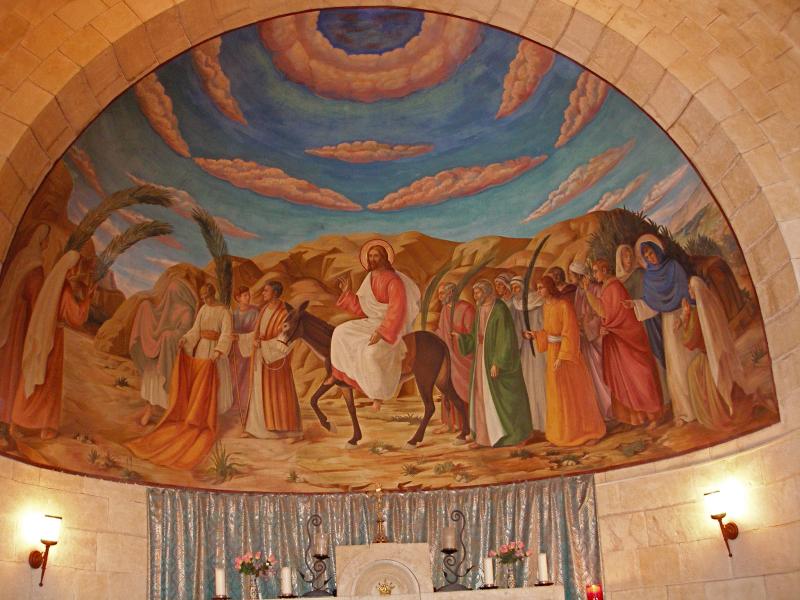
Bethany
Bethany was a small village on the outskirts of Jerusalem, about two miles away. Bethany is mentioned just once in the Old Testament (Jdt 1:9). Bethany was located on the same hillside as the Mount of Olives (Mt 24:3-5). In Matthew’s Gospel, Jesus lodged at Bethany after His entry into Jerusalem. Jesus also dined at the house of Simon the Leper, where He was anointed for His burial before His resurrection.
And leaving them, he went out of the city to Bethany, and there he spent the night. Matthew 21:17
Now when Jesus was in Bethany in the house of Simon the leper, Matthew 26:6
Bethlehem
Bethlehem is the birthplace of Christ. The Hebrew name Bethlehem means “house of bread,” which is symbolic of the Eucharist. Bethlehem is also known as the “City of David.” David was anointed King of Israel in Bethlehem by the prophet Samuel. In the Book of Micah, a prophecy was given that the Messiah would come from Bethlehem.
When Jesus was born in Bethlehem of Judea, in the days of King Herod, behold, magi from the east arrived in Jerusalem, Matthew 2:1
They said to him, “In Bethlehem of Judea, for thus it has been written through the prophet: Matthew 2:5
‘And you, Bethlehem, land of Judah, are by no means least among the rulers of Judah; since from you shall come a ruler, who is to shepherd my people Israel.’” Matthew 2:6
He sent them to Bethlehem and said, “Go and search diligently for the child. When you have found him, bring me word, that I too may go and do him homage.” Matthew 2:8
When Herod realized that he had been deceived by the magi, he became furious. He ordered the massacre of all the boys in Bethlehem and its vicinity two years old and under, in accordance with the time he had ascertained from the magi. Matthew 2:16
Bethphage
The Hebrew translation of Bethphage is “house of unripe figs.” Bethphage is not mentioned in the Old Testament. In the New Testament, Bethphage is only mentioned in the synoptic Gospels. Like Bethany, Bethphage was located on the Mount of Olives. It would seem Bethany was located near the base of of the hillside, while Bethphage was located near the summit. What is significant about Bethphage in Matthew’s Gospel is this where Palm Sunday and our holy week began where we process in the church with palm fronds and proclaim “Hosanna in the highest!” It should also be noted Christ fulfilled two Old Testament prophecies at Bethphage:
Isaiah’s Prophecy:
The LORD has proclaimed to the ends of the earth: Say to daughter Zion, “See, your savior comes! See, his reward is with him, his recompense before him.” Isaiah 62:11
Zechariah’s Prophecy:
Exult greatly, O daughter Zion! Shout for joy, O daughter Jerusalem! Behold: your king is coming to you, a just savior is he, Humble, and riding on a donkey, on a colt, the foal of a donkey. Zechariah 9:9
“Say to daughter Zion, ‘Behold, your king comes to you, meek and riding on an ass, and on a colt, the foal of a beast of burden.’” Matthew 21:5
When they drew near Jerusalem and came to Bethphage on the Mount of Olives, Jesus sent two disciples, Matthew 21:1
Bethsaida
Bethsaida was another seaside community on the Sea of Galilee. It might be best known as being the hometown of Peter, Andrew, and Philip. There is no mention of Bethsaida in the Old Testament, but the town is mentioned in all four Gospels (Matthew, Mark, Luke, John). Bethsaida is not viewed in a positive light in Matthew’s Gospel. Jesus basically curses the Bethsaida community for their lack of belief in Him.
“Woe to you, Chorazin! Woe to you, Bethsaida! For if the mighty deeds done in your midst had been done in Tyre and Sidon, they would long ago have repented in sackcloth and ashes. Matthew 11:21
Gadarenes
The territory of the Gadarenes was the nearby surrounding area of the Gentile city of Gadara, which is not specifically mentioned in the Bible. Gadara was known to be one of the ten cities of the Decapolis, which is mentioned in Matthew and Mark’s Gospels. Jesus exorcised demons at the Gadarenes and sent them into a herd of swine at their pleading request. The feeding herd of swine indicates that this was Gentile or pagan territory. What might be significant here is that Jesus shows His divine authority over the demons, regardless of what territory He was in. It should also be noted that the demons immediately came out to confront Jesus as soon as He arrived there.
When he came to the other side, to the territory of the Gadarenes, two demoniacs who were coming from the tombs met him. They were so savage that no one could travel by that road. Matthew 8:28
3. Ancient Cities
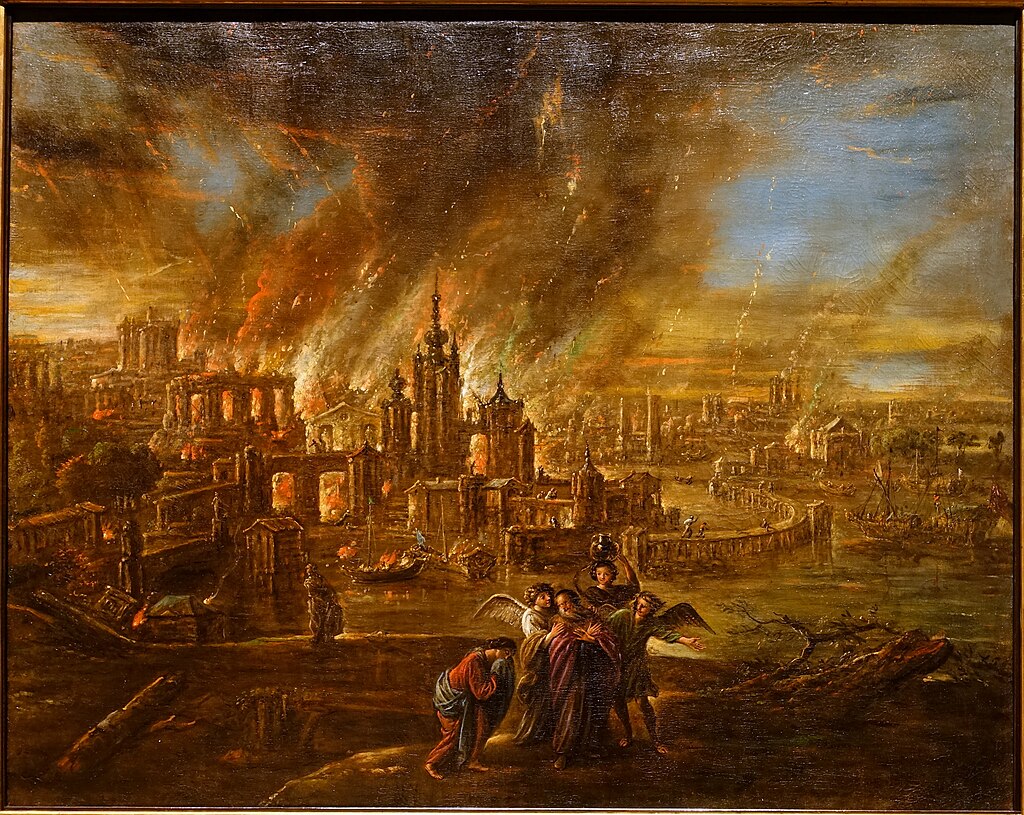
Gomorrah
Gomorrah was an ancient city near the Dead Sea known for its wickedness, sin, and depravity. Both Sodom and Gomorrah experienced God’s wrath in the Book of Genesis. In Matthew’s Gospel, Jesus explains to His disciples who go out on mission that the people who reject them will be under a more severe judgment of God on their day of judgment than the people of Sodom and Gomorrah. This might be because the people of Sodom and Gomorrah had already experienced God’s wrath in this life, while those who rejected Christ’s missionary disciples had not.
Amen, I say to you, it will be more tolerable for the land of Sodom and Gomorrah on the day of judgment than for that town. Matthew 10:15
Nineveh
Nineveh is well known for the prophet Jonah who was swallowed by a whale when he refused to preach to the people in Nineveh. When Johah did preach to the people of Nineveh, they repented. The scribes and Pharisees, however, did not repent at the deeds of Jesus. Jesus explains to them that His ministry is greater than that of Jonah, but because they reject Him, they will be condemned at the judgment.
At the judgment, the men of Nineveh will arise with this generation and condemn it, because they repented at the preaching of Jonah; and there is something greater than Jonah here. Matthew 12:41
Sodom
Sodom is an ancient city near the Dead Sea that was known for its wickedness, sin, and depravity. Both Sodom and Gomorrah experienced God’s wrath in the Book of Genesis. In Matthew’s Gospel, Jesus explains to His disciples who go out on mission that the people who reject them will be under a more severe judgment of God on their day of judgment than the people of Sodom and Gomorrah. This might be because the people of Sodom and Gomorrah had already experienced God’s wrath in this life, while those who rejected Christ’s missionary disciples had not.
Amen, I say to you, it will be more tolerable for the land of Sodom and Gomorrah on the day of judgment than for that town. Matthew 10:15
And as for you, Capernaum: ‘Will you be exalted to heaven? You will go down to the netherworld.’ For if the mighty deeds done in your midst had been done in Sodom, it would have remained until this day. Matthew 11:23
But I tell you, it will be more tolerable for the land of Sodom on the day of judgment than for you.” Matthew 11:24
4. Nations
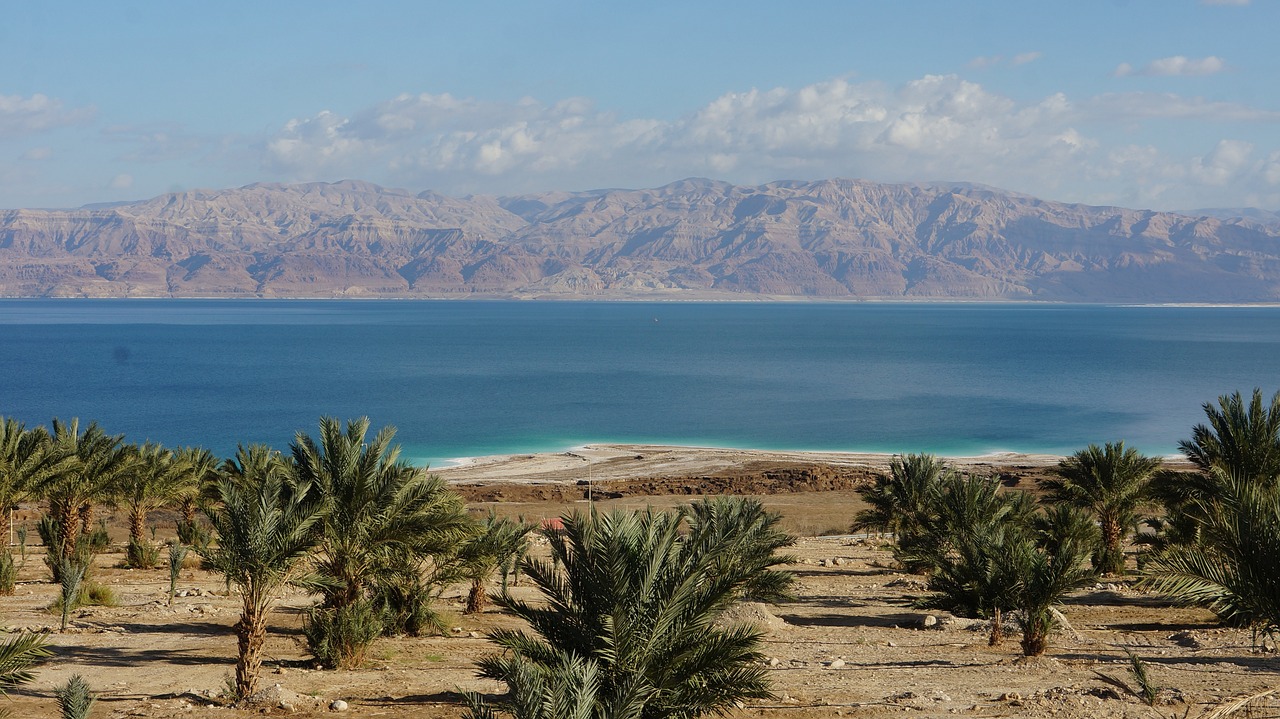
Egypt
Egypt might be one of the most ancient countries on the earth. In Sacred Scripture, Egypt is known for its oppression of the Israelites who lived there in slavery before the Exodus (Exod 12:31-51). In the New Testament, The Holy Family, (Jesus, Mary, and Joseph) moved to Egypt to escape the persecution of Herod at the prompting of an angel. When Herod died, the angel prompted Joseph to move them back to Israel.
When Israel was a child I loved him, out of Egypt I called my son. Hosea 11:1
When they had departed, behold, the angel of the Lord appeared to Joseph in a dream and said, “Rise, take the child and his mother, flee to Egypt, and stay there until I tell you. Herod is going to search for the child to destroy him.” Matthew 2:13
Joseph rose and took the child and his mother by night and departed for Egypt. Matthew 2:14
He stayed there until the death of Herod, that what the Lord had said through the prophetd might be fulfilled, “Out of Egypt I called my son.” Matthew 2:15
When Herod had died, behold, the angel of the Lord appeared in a dream to Joseph in Egypt Matthew 2:19
Israel
The land of Israel during the biblical time of Jesus extended as far north a Lake Huleh, north of the Sea of Galilee, down to Beersheba in Idumaea, west of the Dead Sea. The word Israel means “one who struggles with God,” and it is named after the patriarch Jacob from the Book of Genesis. Israel has multiple meanings during the time of Jesus. It can mean the land of Israel, the people of Israel, the nation of Israel, the kingdom of Israel, and the house of Israel, which are the descendants of the patriarch Jacob.
‘And you, Bethlehem, land of Judah, are by no means least among the rulers of Judah; since from you shall come a ruler, who is to shepherd my people Israel.’” Matthew 2:6
And said, “Rise, take the child and his mother and go to the land of Israel, for those who sought the child’s life are dead.” Matthew 2:20
He rose, took the child and his mother, and went to the land of Israel. Matthew 2:21
When Jesus heard this, he was amazed and said to those following him, “Amen, I say to you, in no one in Israel have I found such faith. Matthew 8:10
And when the demon was driven out the mute person spoke. The crowds were amazed and said, “Nothing like this has ever been seen in Israel.” Matthew 9:33
Go rather to the lost sheep of the house of Israel. Matthew 10:6
When they persecute you in one town, flee to another. Amen, I say to you, you will not finish the towns of Israel before the Son of Man comes. Matthew 10:23
He said in reply, “I was sent only to the lost sheep of the house of Israel.” Matthew 15:24
The crowds were amazed when they saw the mute speaking, the deformed made whole, the lame walking, and the blind able to see, and they glorified the God of Israel. Matthew 15:31
Jesus said to them, “Amen, I say to you that you who have followed me, in the new age, when the Son of Man is seated on his throne of glory, will yourselves sit on twelve thrones, judging the twelve tribes of Israel. Matthew 19:28
“He saved others; he cannot save himself. So he is the king of Israel! Let him come down from the cross now, and we will believe in him. Matthew 27:42
Judah
The “land of Judah” extended through a large area of Southern Palestine. In context of St. Matthew’s Gospel, Judah is the land of the messiah. Both Jesus and David were born in Bethlehem in the land of Judah. The prophet Micah prophesized:
But you, Bethlehem-Ephrathaha least among the clans of Judah, From you shall come forth for me one who is to be ruler in Israel; Whose origin is from of old, from ancient times. Micah 5:1
Church Father St. Jerome said that “land of Judah” was added by the chief priests and scribes in explanation to King Herod to distinguish it from another town:
“Thou, Bethlehem, of the land of Judah, or Ephrata, (which is added to distinguish it from another Bethlehem in Galilee,) though thou art a small village among the thousand cities of Judah, yet out of thee shall be born Christ, who shall be the Ruler of Israel, who according to the flesh is of the seed of David, but was born of Me before the worlds.” + St. Jerome
‘And you, Bethlehem, land of Judah, are by no means least among the rulers of Judah; since from you shall come a ruler, who is to shepherd my people Israel.’” Matthew 2:6
Syria
Syria was located directly north of Palestine. It was governed by the Romans during the time of Jesus’ public ministry. Word about Jesus (His teaching, preaching, and miraculous healings of those who were sick or afflicted) spread throughout Syria.
His fame spread to all of Syria, and they brought to him all who were sick with various diseases and racked with pain, those who were possessed, lunatics, and paralytics, and he cured them. Matthew 4:24
5. Regions
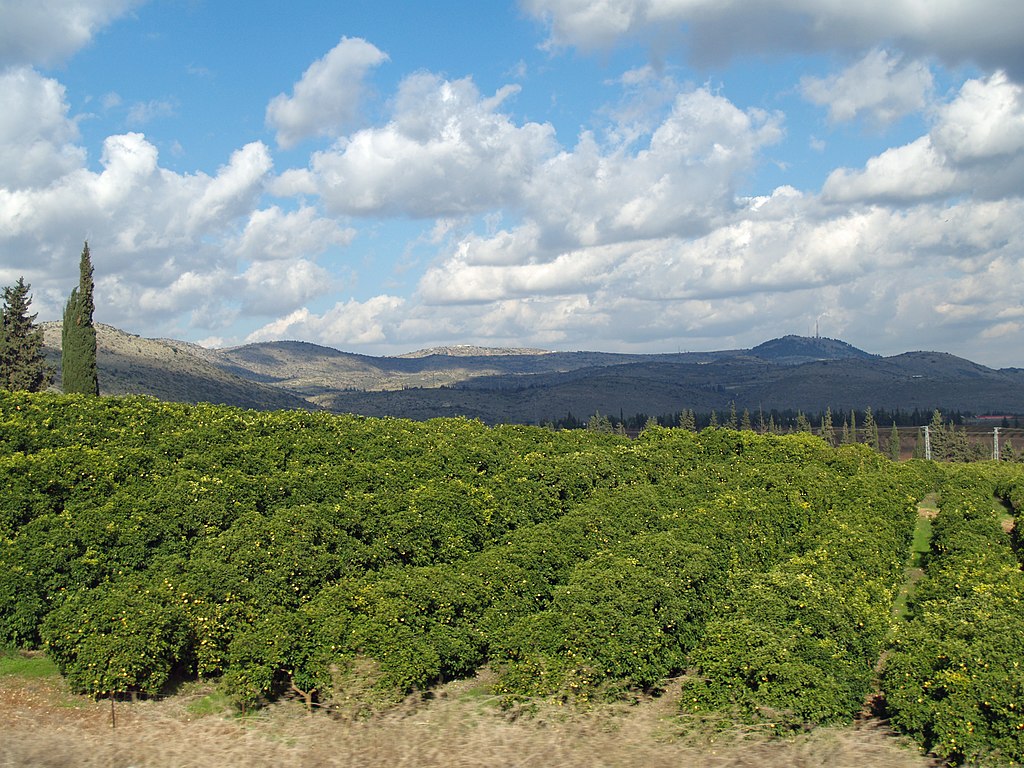
Galilee
Galilee was where Jesus spent much of His life. Jesus was raised in Nazareth, which was in Galilee, and much of His public ministry was in or around Capernaum, which was also in Galilee. The apostles (except Judas Iscariot) were Galileans. Galilee was located in northern Palestine. Galilee was also inhabited by Gentiles. The land itself has both mountains, hills, and plains. Galilee extended from the Mediterranean to the Sea of Galilee. Other communities mentioned in the Gospels from Galilee include:
- Chorazin (Mt 11:21; Lk 10:13)
- Magdala (Jn 19:25, 20:1, 20:18)
- Cana (Jn 2:1, Jn 2:11, Jn 4:46, Jn 21:2)
- Tiberias (Jn 6:23)
- Gennesaret (Mt 14:34, Mk 6:53, Lk 5:1)
- Nain (Lk 7:11)
But when he heard that Archelaus was ruling over Judea in place of his father Herod, he was afraid to go back there. And because he had been warned in a dream, he departed for the region of Galilee. Matthew 2:22
Then Jesus came from Galilee to John at the Jordan to be baptized by him. Matthew 3:13
When he heard that John had been arrested, he withdrew to Galilee. Matthew 4:12
“Land of Zebulun and land of Naphtali, the way to the sea, beyond the Jordan, Galilee of the Gentiles, Matthew 4:15
He went around all of Galilee, teaching in their synagogues, proclaiming the gospel of the kingdom, and curing every disease and illness among the people. Matthew 4:23
And great crowds from Galilee, the Decapolis, Jerusalem, and Judea, and from beyond the Jordan followed him. Matthew 4:25
As they were gathering in Galilee, Jesus said to them, “The Son of Man is to be handed over to men, Matthew 17:22
When Jesus finished these words, he left Galilee and went to the district of Judea across the Jordan. Matthew 19:1
And the crowds replied, “This is Jesus the prophet, from Nazareth in Galilee.” Matthew 21:11
But after I have been raised up, I shall go before you to Galilee.” Matthew 26:32
There were many women there, looking on from a distance, who had followed Jesus from Galilee, ministering to him. Matthew 27:55
Then go quickly and tell his disciples, ‘He has been raised from the dead, and he is going before you to Galilee; there you will see him.’ Behold, I have told you.” Matthew 28:7
Then Jesus said to them, “Do not be afraid. Go tell my brothers to go to Galilee, and there they will see me.” Matthew 28:10
The eleven disciples went to Galilee, to the mountain to which Jesus had ordered them. Matthew 28:16
Gennesaret
Gennesaret was on a plain that was most likely at the northwest corner of the Sea of Galilee. Before Jesus and His disciples reached Gennesaret, Jesus had just walked on water in the sea, and there was also the miraculous multiplication of the loaves, which is symbolic of the Eucharist. When Jesus and His disciples arrived in Gennesaret, people recognized Him, and they brought to Him their sick. All they had to do was touch the tassel of His cloak and they were healed of their infirmities. This is the power of God, and we can experience it on a similar level when we receive the Eucharist worthily during holy communion, and when we pray to Jesus with faith.
After making the crossing, they came to land at Gennesaret. Matthew 14:34
Judea
Judea was the region of land in southern Palestine. Judea is named after the Israelite tribe, Judah. “Judea” is the Roman name for the territory of Judah. Bethlehem, the town where Jesus was born, was in Judea. Jerusalem was also in Judea. Samaria was north of Judea. Idumaea the Negev Desert were south of Judea. Judea was between the Dead Sea and the Mediterranean Sea. John the Baptist preached in the desert wilderness of Judea, west of the Dead Sea. Great crowds of people from Judea went out to be baptized by John in the Jordan River in acknowledgement of their sins. During the public ministry of Jesus, great crowds of people from Judea went out to follow Jesus whose fame had spread from his preaching, teachings, and miracles.
When Jesus was born in Bethlehem of Judea, in the days of King Herod, behold, magi from the east arrived in Jerusalem, Matthew 2:1
They said to him, “In Bethlehem of Judea, for thus it has been written through the prophet: Matthew 2:5
But when he heard that Archelaus was ruling over Judea in place of his father Herod, he was afraid to go back there. And because he had been warned in a dream, he departed for the region of Galilee. Matthew 2:22
In those days John the Baptist appeared, preaching in the desert of Judea Matthew 3:1
At that time Jerusalem, all Judea, and the whole region around the Jordan were going out to him Matthew 3:5
And great crowds from Galilee, the Decapolis, Jerusalem, and Judea, and from beyond the Jordan followed him. Matthew 4:25
When Jesus finished these words, he left Galilee and went to the district of Judea across the Jordan. Matthew 19:1
Then those in Judea must flee to the mountains, Matthew 24:16
Magadan
The district or region of Magadan is only mentioned here in the entire Bible. Jesus and His disciples went to Magadan after the miraculous feeding of the 4,000 (Mt 15:32-38). Magadan was most likely near the Sea of Galilee. What might be significant about Magadan is it shows that the ministry of Jesus extends well beyond Capernaum.
And when he had dismissed the crowds, he got into the boat and came to the district of Magadan. Matthew 15:39
Naphtali
The territory or region of Naphtali was located between the Sea of Galilee and the mountains of Central Galilee. Naphtali is mentioned numerous times in the Old Testament. Both Jews and Gentiles lived in the area. After years of darkness and hardship, they were some of the first people to experience the light of Christ.
There is no gloom where there had been distress. Where once He degraded the land of Zebulun and the land of Naphtali, now He has glorified the way of the Sea, the land across the Jordan, Galilee of the Nations. Isaiah 8:23
He left Nazareth and went to live in Capernaum by the sea, in the region of Zebulun and Naphtali, Matthew 4:13
“Land of Zebulun and land of Naphtali, the way to the sea, beyond the Jordan, Galilee of the Gentiles, Matthew 4:15
Zebulun
The territory of Zebulun is mentioned in the Book of Joshua 19:10-16. Like Naphtali, Zebulun was in Galilee, and it was inhabited by both Jews and Gentiles. Jesus begins His public ministry in this area near the Sea of Galilee, preaching repentance.
He left Nazareth and went to live in Capernaum by the sea, in the region of Zebulun and Naphtali, Matthew 4:13
“Land of Zebulun and land of Naphtali, the way to the sea, beyond the Jordan, Galilee of the Gentiles, Matthew 4:15
6. Mountains
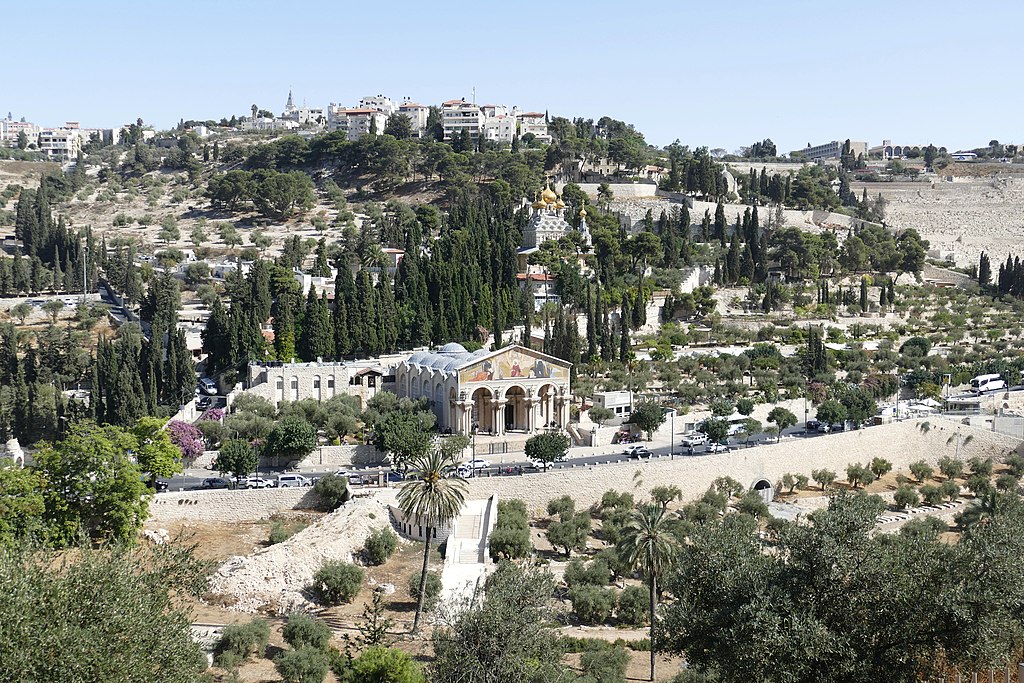
Mount of Olives
The Mount of Olives is a key geographical location in the Gospel. The mount or hill is located east of Jerusalem. The Kidron valley was between the Mount of Olives and Jerusalem. The villages of Bethany and Bethphage are located on the Mount of Olives as was also the Garden of Gethsemane. The hillside was known as the Mount of Olives because of the many olive trees that grew there during biblical times.
Key Events at the Mount of Olives in the Gospel
- Jesus enters Jerusalem from the Mount at Bethphage (Mt 21:1-11)
- Jesus curses the fig tree before His next arrival in Jerusalem (Mt 21:18-22)
- Jesus gives His eschatological ( the final things to come) discourse (Mt 24)
- The anointing of Jesus at Bethany in the house of Simon the leper (Mt 26:6-12)
- Jesus and His disciples went to the Mount after Last Supper (Mt 26:30)
- Jesus foretells Peter’s three times denial of Him (Mt 26:31-35)
- Jesus experiences agony in the Garden of Gethsemane (Mt 26:36-46)
- Jesus is betrayed by Judas and arrested (Mt 26:47-56)
- The Ascension of Jesus took place on the Mount of Olives (Acts 1:11-12)
When they drew near Jerusalem and came to Bethphage on the Mount of Olives, Jesus sent two disciples, Matthew 21:1
As he was sitting on the Mount of Olives, the disciples approached him privately and said, “Tell us, when will this happen, and what sign will there be of your coming, and of the end of the age?” Matthew 24:3
Then, after singing a hymn, they went out to the Mount of Olives. Matthew 26:30
Zion
The context of this verse about Zion in Matthew’s Gospel is about Jesus’ humble and triumphant entry into Jerusalem. The prophets Zechariah (Zech 9:9) and Isaiah (Isa 62:11) foretold the Messianic prophecy. “Daughter Zion” is another name for the city of Jerusalem. “Zion” is the mountain crest where the city of Jerusalem is located.
Glorify the LORD, Jerusalem; Zion, offer praise to your God. Psalms 147:12
“Say to daughter Zion, ‘Behold, your king comes to you, meek and riding on an ass, and on a colt, the foal of a beast of burden.’” Matthew 21:5
7. Bodies of Water
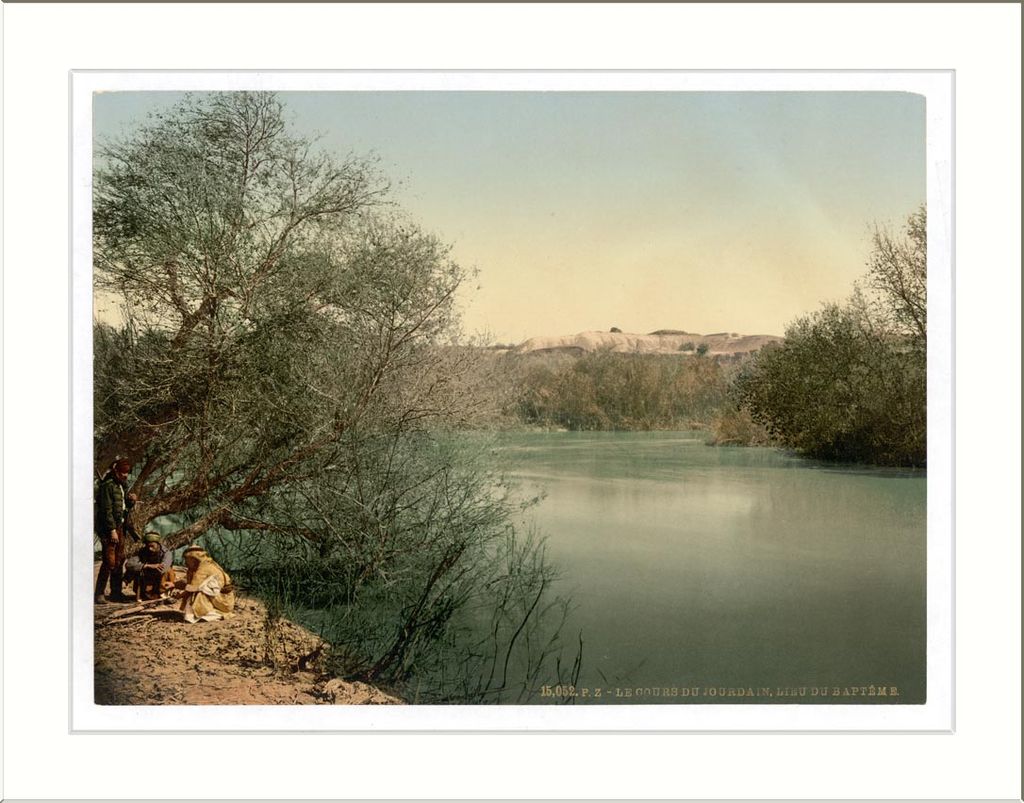
Jordan River
The Jordan River might be best known in the Gospel for John the Baptist. John was baptizing people in the Jordan for repentance. Jesus was also baptized by John at the Jordan. St. Maximus said Jesus was baptized by John at the Jordan not to become holy, but to make the water holy. The Jordan River itself is the largest river in all of Palestine. Here are some interesting learning points about the Jordan River:
- The Jordan River starts at Lake Huleh near Mount Hermon.
- The Upper Jordan River flows into the Sea of Galilee.
- The Lower Jordan River flows into the Dead Sea.
- The Jordan is about 80 miles long but around 200 miles winding.
- Average river width: 90 – 100 ft; Average river depth: 3 – 10 ft.
- Jordan River flows 700 ft. below sea level at Sea of Galilee.
- Jordan River flows over 1,200 ft below sea level at the Dead Sea.
- The Jordan is mentioned in all four Gospels (Matthew, Mark, Luke, and John).
- The Jordan River is mentioned in the New Testament only in the Gospels.
At that time Jerusalem, all Judea, and the whole region around the Jordan were going out to him Matthew 3:5
And were being baptized by him in the Jordan River as they acknowledged their sins. Matthew 3:6
Then Jesus came from Galilee to John at the Jordan to be baptized by him. Matthew 3:13
“Land of Zebulun and land of Naphtali, the way to the sea, beyond the Jordan, Galilee of the Gentiles, Matthew 4:15
And great crowds from Galilee, the Decapolis, Jerusalem, and Judea, and from beyond the Jordan followed him. Matthew 4:25
When Jesus finished these words, he left Galilee and went to the district of Judea across the Jordan. Matthew 19:1
Sea of Galilee
The Sea of Galilee is a key location in the Gospels. Jesus spent much of His public ministry near the Sea of Galilee at Capernaum, and there are several events that happened at the Sea of Galilee in the Gospels, noted below. The Sea of Galilee (a large lake) is about 10 miles longs and 5 miles wide. Like the Dead Sea, the Sea of Galilee is below sea level, and it averages almost 200 ft. in depth with a max depth of almost 800 ft. During biblical times, the Sea of Galilee was known for its fishing.
Key Events in the Gospels at the Sea of Galilee
| Gospel Event | Verses |
|---|---|
| The calling of the disciples | Mt 4:18-32, Mk 1:16-20, Lk 5:1-11 |
| Jesus walks on water | Mt 14:22-33, Mk 6:45-52, Jn 6:16-21 |
| Jesus walks by the Sea of Galilee | Mt 15:29 |
| The calming of the storm by Jesus | Mt 8:23-27, Mk 4:35-41, Lk 8:22-25 |
| Resurrection appearance of Jesus | Jn 21:1 |
As he was walking by the Sea of Galilee, he saw two brothers, Simon who is called Peter, and his brother Andrew, casting a net into the sea; they were fishermen. Matthew 4:18
Moving on from there Jesus walked by the Sea of Galilee, went up on the mountain, and sat down there. Matthew 15:29
